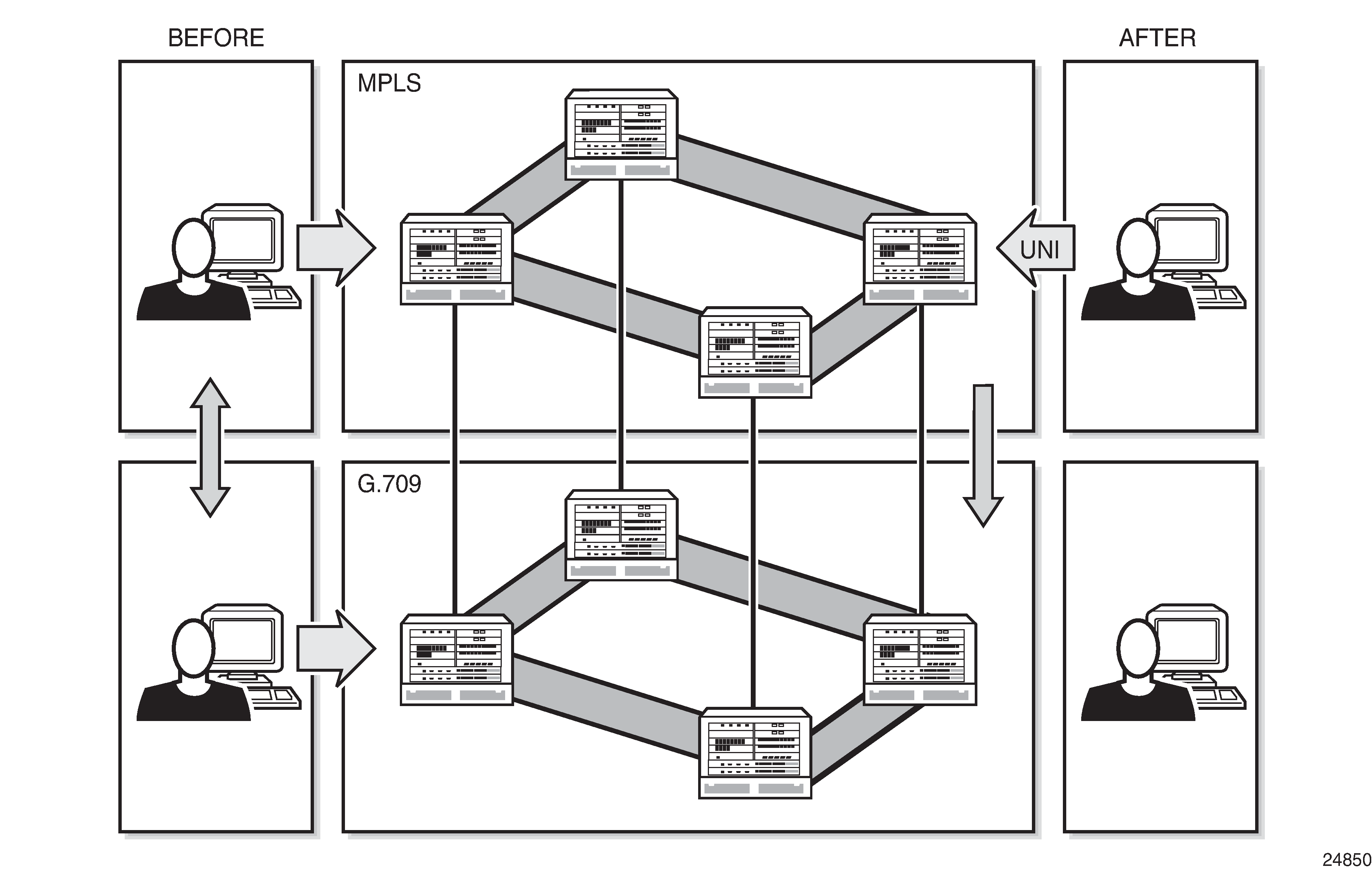This use case aims to solve inefficiencies between IP and transport teams within an operator for connectivity setup; for example:
Process complexity, with complex database exchange, parsing and filtering
Long-winded organizational communication before path establishment
It therefore aims to optimize IP/Optical transport team interactions by removing complex processes, and reduces per-connection provisioning in the optical core.
The UNI should allow the setup/maintenance/release of connections across an intermediate optical transport network from a UNI-C router to another remote UNI-C router. The routers are connected to an optical network that consists of optical cross connects (OXCs), and the interconnection between the OXC and the router is based on the GMPLS UNI (RFC 4208). The UNI-C routers are 7750 SR or 7950 XRS nodes, while the UNI-N OXC is the Nokia1830 PSS. The UNI connection is instantiated using a GMPLS LSP (gLSP).
The UNI-C router is always the initiator of the connection. The only per-connection configuration occurs at the UNI-C, and it is operator initiated. Connections to any of the remote UNI-C routers are signaled over the UNI. The initiation of a connection request is via CLI or SNMP to the UNI-C router.
Signaling is based on RSVP-TE (RFC 4208). Constraints can be signaled with a connection setup request. These include bandwidth, protection type, and latency. If a connection could not be established, a correct (descriptive) error code is returned to the initiator.
